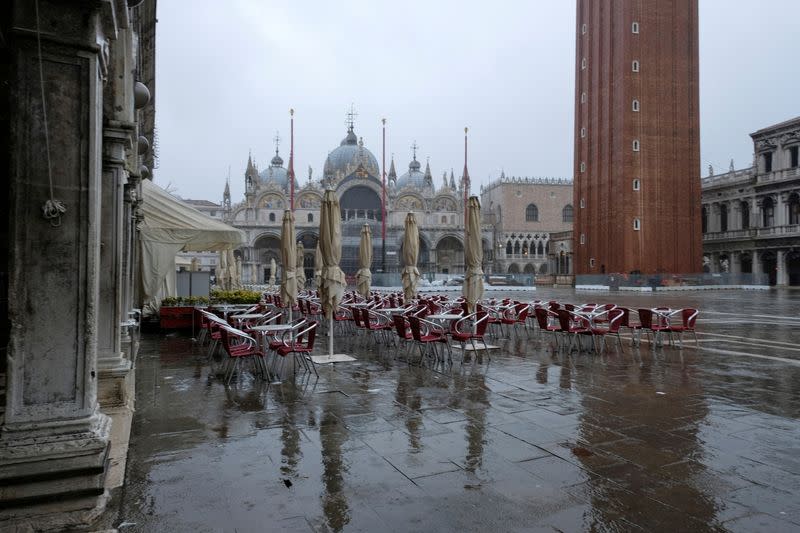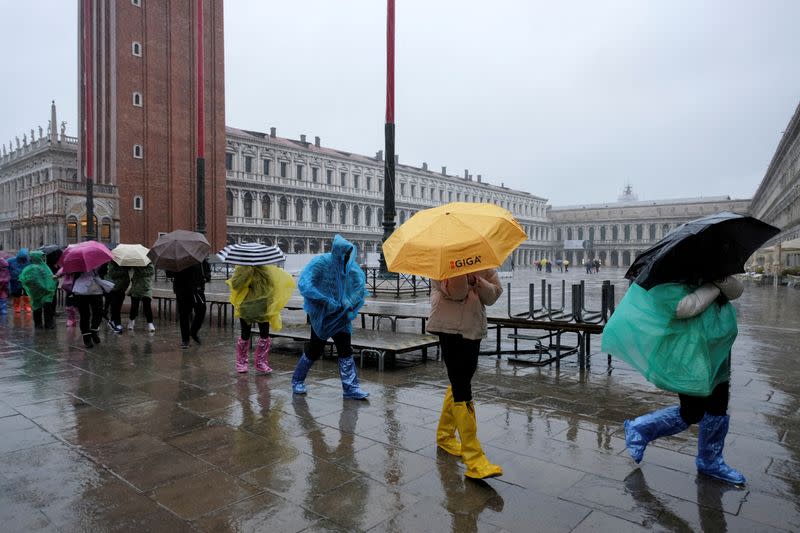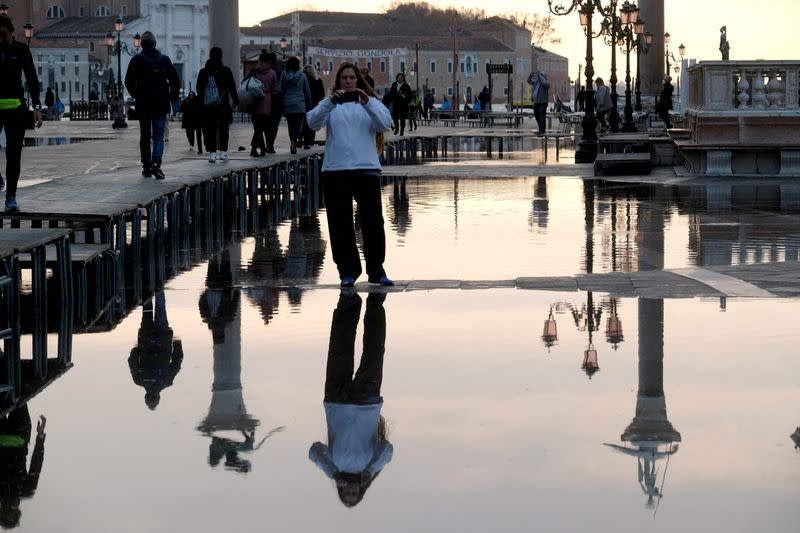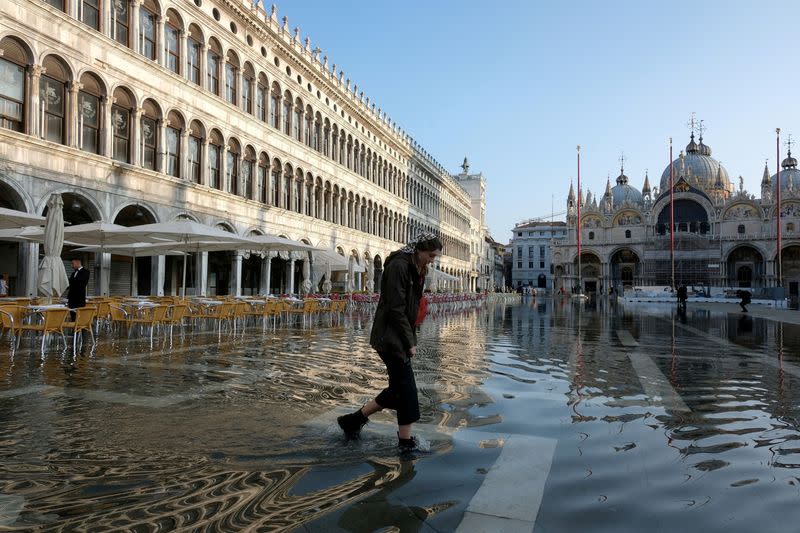Venice kept dry as dam system wards off exceptional high tide
VENICE, Italy (Reuters) - A dam system built to protect Venice and its famous Piazza San Marco from flooding withstood the challenge of an exceptionally high tide on Tuesday as heavy rains swept across Italy.
Weather bulletins had forecast a tide of 170 cm (5.58 ft) for Tuesday - near record levels - raising an alert for potential flooding that could have left large areas of the lagoon city under water.
However, the Mose, a system of 78 flood gates rising from the Venetian lagoon floor, was activated in advance overnight, shielding the city from the high waters seen at sea.
Locals and a few brave tourists were seen roaming around the city's historic centre despite the strong winds and heavy rainfall.
Over the years, the city has been affected by regular high tides, or "acqua alta" in Italian, as in 2019, when the city was devastated by the second-highest tide ever recorded, and two years ago.
The occurrence is caused by a combination of factors exacerbated by climate change, from rising sea levels and unusually high tides to land subsidence that has caused the ground level of the city to sink.
"If the Mose barriers had not been there, Venice would have been catastrophically under water," Italy's Transport Minister Matteo Salvini said.
Designed in 1984, the multi-billion-euro Mose project is aimed at protecting Venice from tides of up to 3 metres, well beyond current records, but over the years, the project has been plagued by corruption, cost overruns and prolonged delays.
The Mose scheme, both an acronym for the project's name in Italian and a reference to the biblical prophet Moses, first began operating in October 2020.
High tides are expected to last well into Wednesday and Thursday, with a tide of up to 140 cm forecast for both days.
(Reporting by Manuel Silvestri in Venice and Federico Maccioni in Milan, additional reporting by Alvise Armellini; Editing by Bernadette Baum)




